Nicknamed the “Petit Garnier”, the Opéra-Comique has nothing to envy its big brother! Gilding, woodwork, sculptures and red velvet armchairs amaze the many spectators who come to see a show every evening.
But if the Opéra-Comique shines today and proudly displays itself as one of the oldest theatrical institutions in France, its history has not always been easy and the “Comique” has sometimes had to fight to make a place for itself. Here is a look back at the history of this Parisian cultural institution.
Article produced in partnership with the Opéra-Comique
The history of the Opéra-Comique
In the beginning: a fairground troupe that competed with the Comédie Française
The history of comic opera began at the end of the 17th century in the Parisian fairs when fairground troupes performed pantomimes and opera parodies. These shows of a new kind seduced a large audience, up to the Sun King, Louis XIV, a great lover of art and music.
But this new genre was not to the taste of the Comédie-Française, which saw these shows as a form of competition. Finally, a decree in 1714 granted these troupes the great privilege of having their own theater, on the condition that spoken dialogue be inserted into the sung works: the Opéra-Comique was born!
But what is the opéra-comique genre?
Intercalating sung works into spoken dialogues is the current definition of the comic opera genre, as opposed to opera which is entirely sung. And that is all! Because contrary to what its name might suggest, comic opera is not necessarily funny or happy: it can deal with fictional or historical subjects, sad or amusing, current or ancient…
The birth of the Salle Favart

In 1783, the Opéra-Comique moved into a permanent theater, built on land donated by the Duke of Choiseul. This room was named “Salle Favart” in honor of Charles-Simon Favart (1710-1792), author of libretti. The event was prestigious: the inauguration of this first theater was attended by Queen Marie-Antoinette!
The Opéra-Comique was thus able to live to the fullest, to the rhythm of the curtain rises.
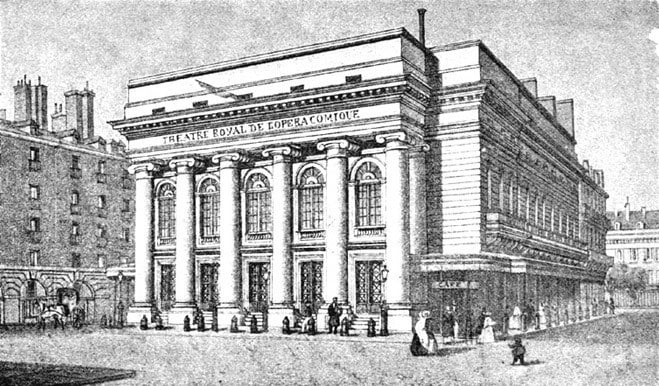
A history that is both prestigious and tragic
Throughout the 19th and 20th centuries, the Opéra-Comique’s history was turbulent: although it enjoyed artistic success, the theater had to deal with economic difficulties and, above all, two fires in 1838 and 1887.
The second fire was particularly memorable: it occurred during a performance because of a problem with the gas lighting and cost the lives of more than one hundred people.
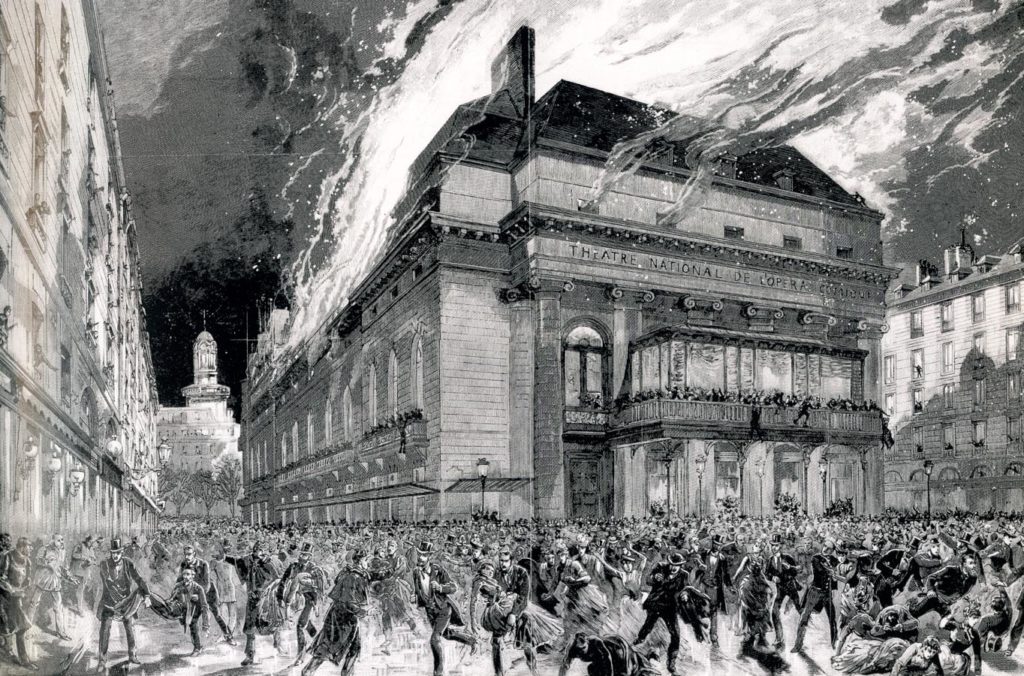
Did you know that?
Following this tragic episode, electric lighting became mandatory in all theaters and concert halls. Rebuilt between 1893 and 1898 and inaugurated a few months before the Universal Exhibition of 1900, the Opéra-Comique became the very first theater in France to be lit entirely by electricity!
It is this new theater of the end of the 19th century that we can still discover today. Although restoration and compliance work has been carried out recently, the superb Salle Favart still retains its charm of yesteryear, which amazes all those who are lucky enough to push open its doors.

Visit of the Opera-Comique
There is no substitute for a “real” visit to the Opéra-Comique, but here are a few photographs to give you an idea of the majesty of this place!
As you enter the vestibule, two statues welcome you: they are Carmen (from Bizet’s comic opera, 1875) and Manon (from Massenet’s comic opera, 1884).
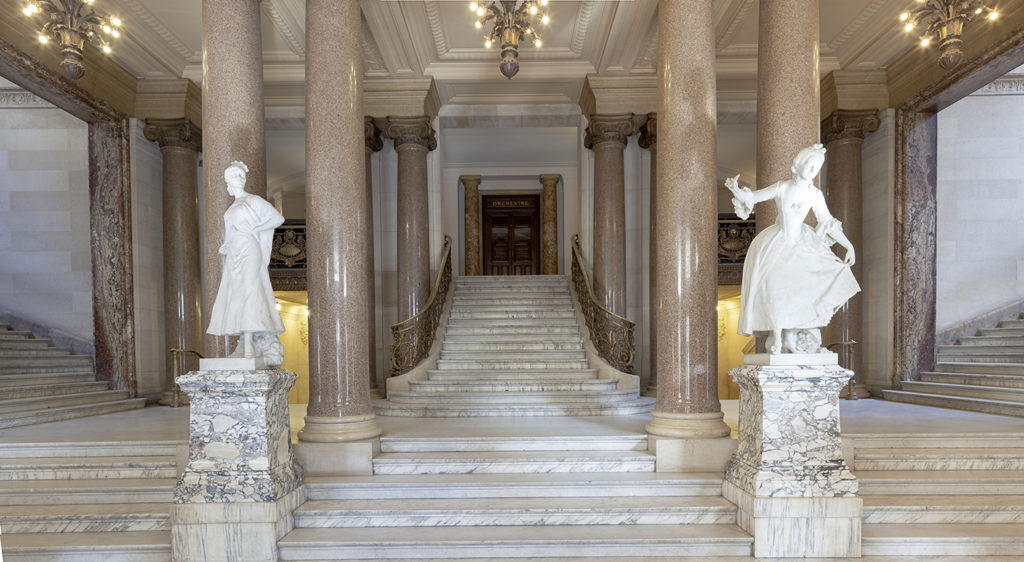
Upstairs, the sublime foyer is decorated with paintings evoking the world of comic opera. And if one could believe that these paintings date from the time of the first hall, a representation of the Eiffel Tower – built in 1889 – betrays a later creation!
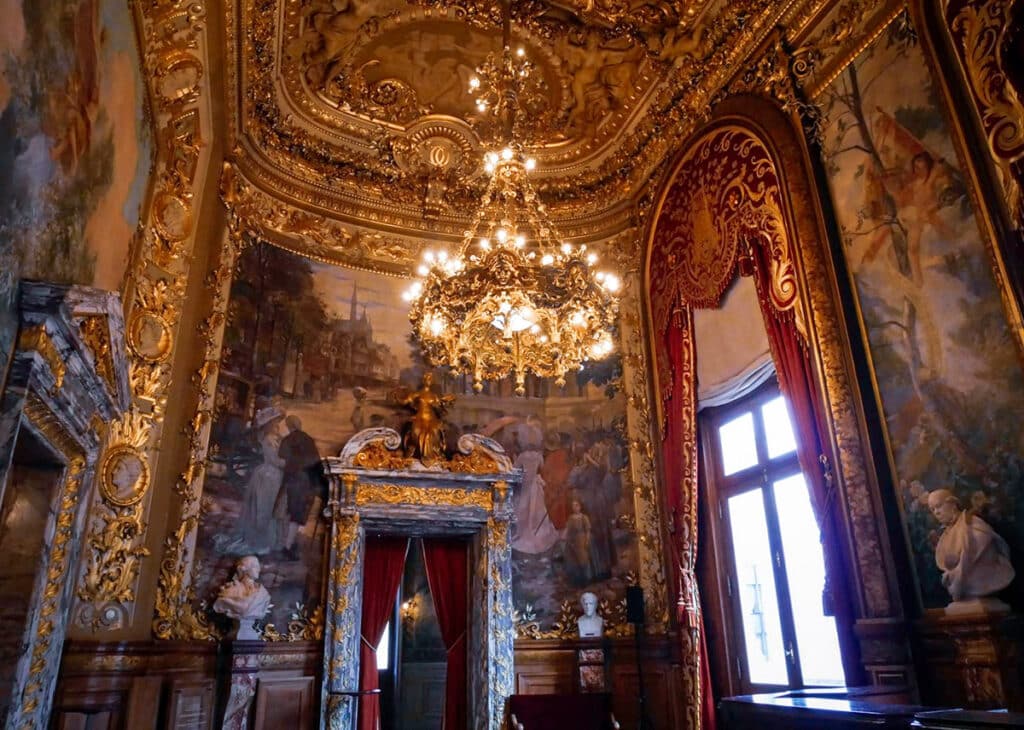
The wonder of wonders at the Opéra-Comique is of course the Salle Favart, which can accommodate up to 1,200 spectators. The ceiling, signed Jean-Joseph Benjamin-Constant, celebrates the “Glorification of music”.
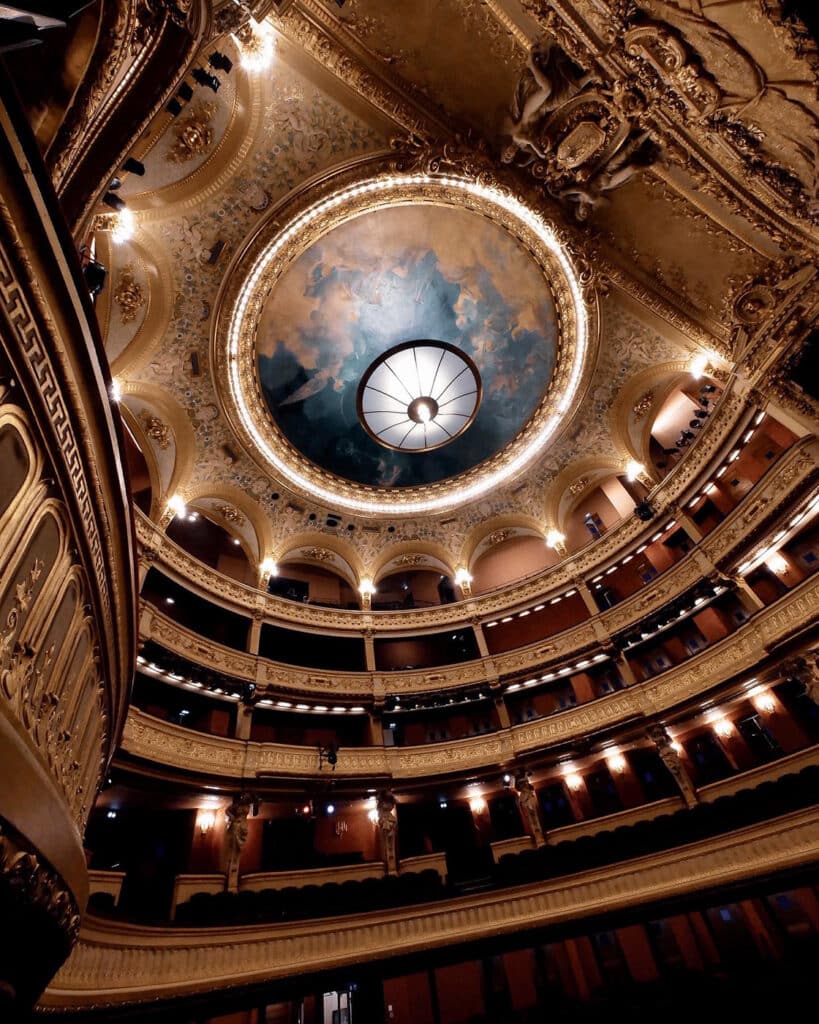
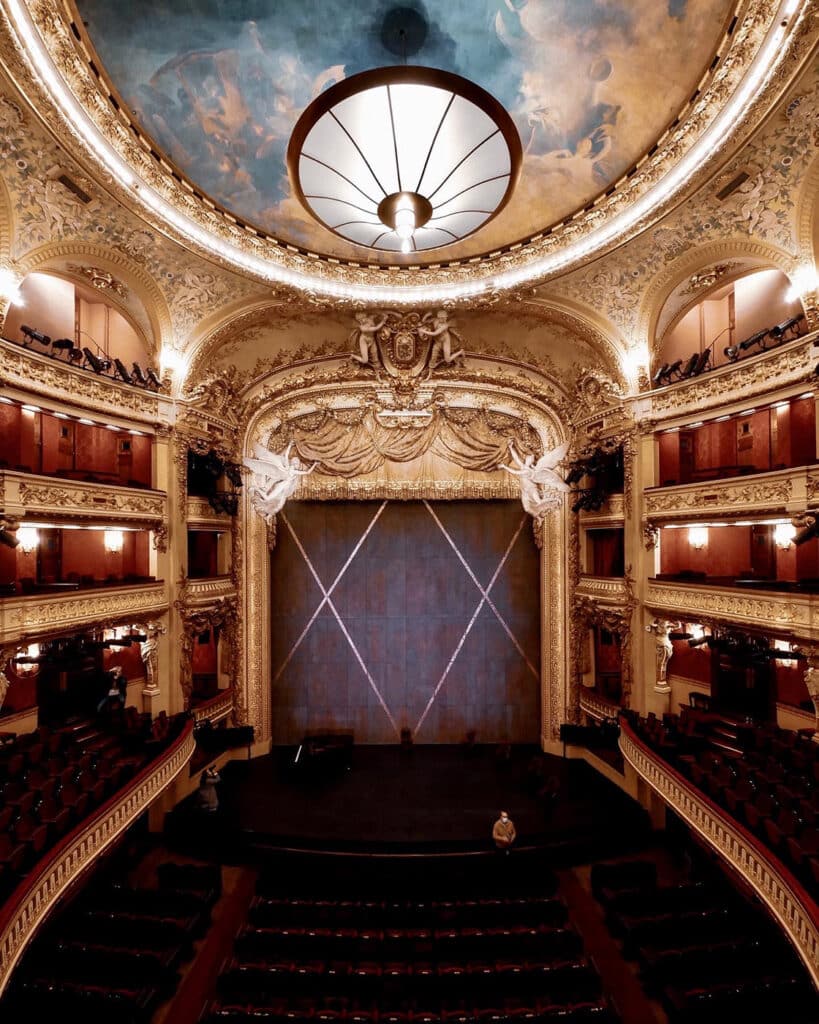
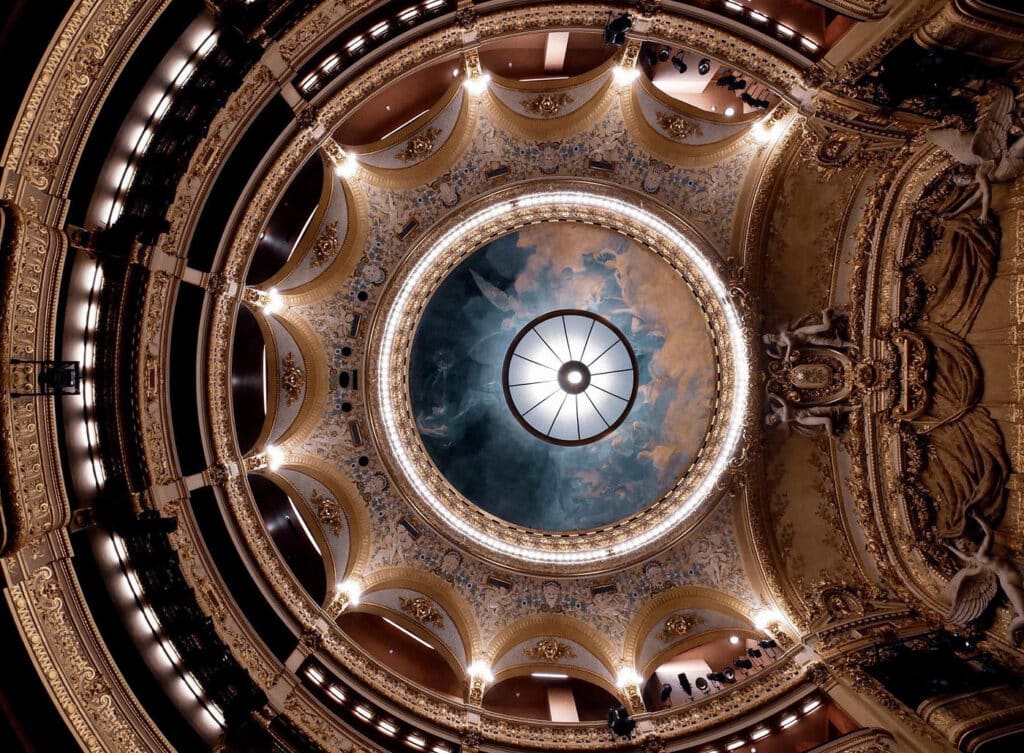
The privilege of the descendants of the Duke of Choiseul
Remember the history of the Opéra-Comique: I told you that the hall was built on land donated by the Duke of Choiseul in 1781. In gratitude, King Louis XVI granted the duke “the priority of the eight-seat box next to that of the cy avant King of France until the last male descendant bearing the name of Choiseul”. Thus, even today, the duke’s heirs can enjoy the first box on the court side free of charge.
One of the original features of this room is the inclination of the seats. They are not oriented towards the stage but towards the auditorium because, in the past, people came to the Opéra-Comique not only to enjoy the show but also to see and be seen: they observed each other in society!
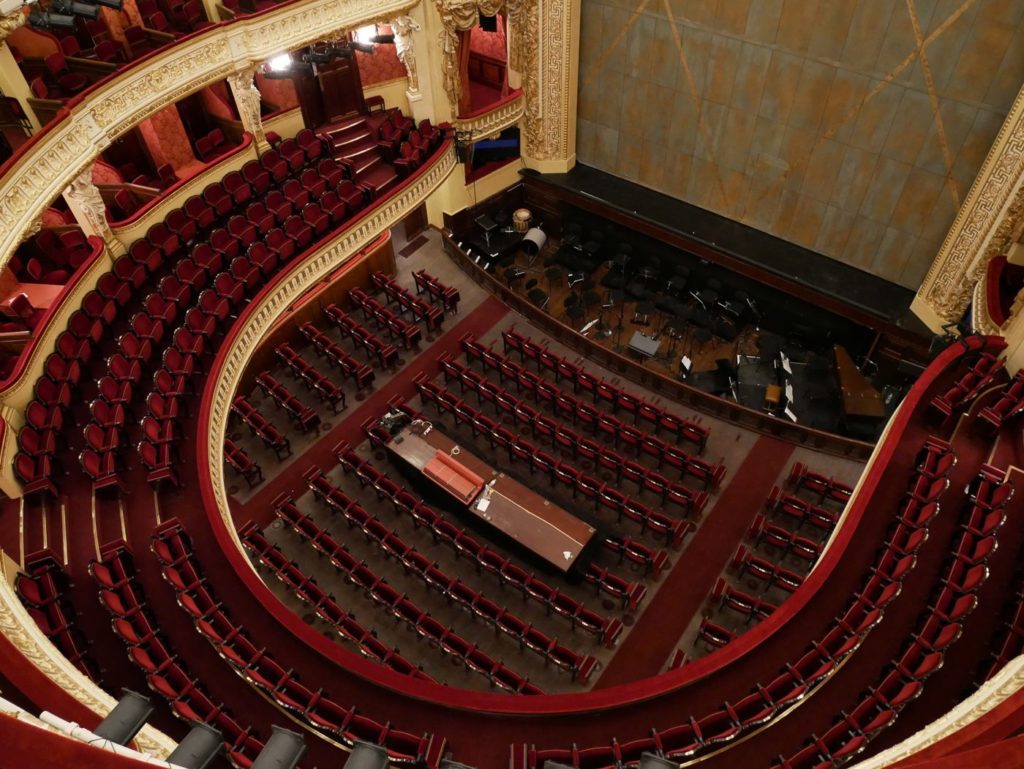
The Opéra-Comique’s program
Each year, the Opéra-Comique offers an eclectic program, with classical works as well as contemporary creations. Find the complete program on the official website of the theater:
Tip!
You can attend shows from only 6 €! Several reduced rates are available for young people under 35, families or job seekers.
I hope this article has made you want to go and discover the Opéra-Comique! Have a nice visit and good shows 😉
Useful informations
Adress:
Opéra-Comique
1 place Boieldieu
75002 Paris
France
Website:
https://www.opera-comique.com/en
Article produced in partnership with the Opéra-Comique





No Comments
Leave a comment Cancel